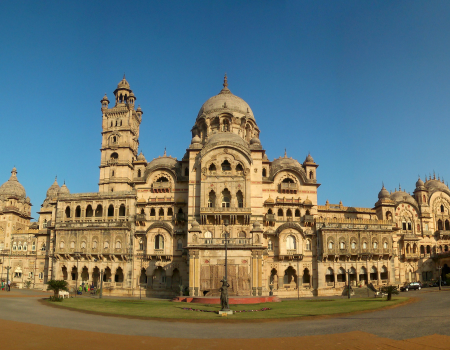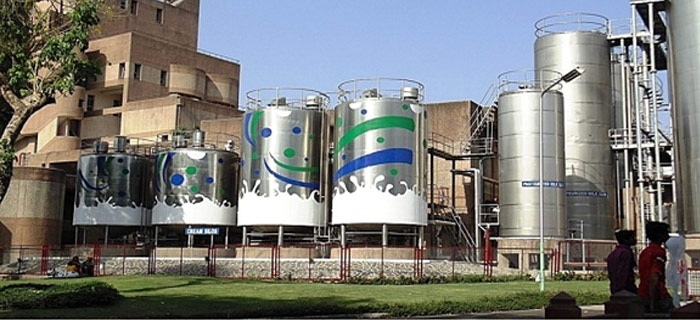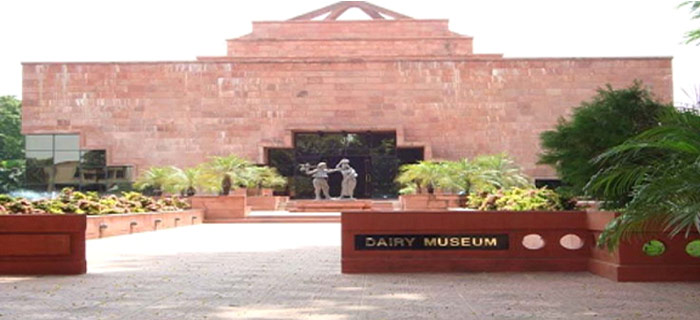New User
Existing UserGujarat – Jewel of Western India Packages

- 4 Nights / 5 Days
* - Terms & Condition apply.
Package Highlights
- Visit the Calico Museum - A Treasure of Textiles
- Visit the Sabarmathi Ashram and get to know why it was situated between a prison and a cemetery
- Check out The Lakshmi Vilas Palace which is four times bigger than the Buckingham Palace in London
- Walk around the 3rd Highest Dam in India - The Sardar Sarovar Dam
- Climb up the elevator to witness the World’s tallest statue - Statue of Unity 600m
- Unravel the tragedy behind the construction of the 5 storied stepwell - Adlaj
- Spend the day at AMUL, understanding nuances of industrial operations procurement procedures
- Marvel at the Akshardham temple built without Iron or Steel
- Flip the New 100 Rs Note to view the Image of the inverted Temple - Rani Ki Vav, A UNESCO World Heritage Site. We take you through this Architecture Marvel.
- The Sun God Temple of Modhera will leave you stunned - The Sun rays on the diamond placed on the Sun God’s head illuminates the entire temple!
Package Overview
Renowned for its paramount historical and religious importance, Gujarat is the 4th most developed state in India. Ever growing centre of innovation, it houses industries ranging from oil, textile, automobile to many more. Gujarat is the forerunner in education sector . It’s larger than life cultural heritage and influence has made it the “Jewel of Western India.”
Ahmedabad is Located on the banks of the river Sabarmati; the city was founded by Sultan Ahmad Shah in 1411. Today it is one of the fastest growing cities of India and is an immense repository of tradition, history & culture. Its famous walled area is one of the finest examples of community living & the city thrived as the textile capital & was nicknamed “Manchester of the East’ in 1888. The city also offers a rich architectural legacy that blends Hindu and Muslim schools of architecture, stone and brick with arches, domes and vaults, carved pillars, trefoil designs besides the modern buildings designed by the famous French architect, Le Corbusier and Louis Kahn.
Itinerary
Visit The Calico Museum – Ahmedabad is the major centre of India’s textile trade and industry since the 15th century. The museum has a collection of rare textiles includes royal tents, carpets and costumes; religious paintings on cloth; embroideries, brocades, silk weaves and Kashmir shawls. The exhibits, most orf which date to the 17th and 18th centuries, are displayed in beautiful Old Haveli. (Calico Museum Timings of visit is from 1015 hrs to 1215 Hrs. Closed on every Wednesday and Public holidays. No children below 10yrs allowed. Photography & cell phones are prohibited). PRIOR APPOINTMENT IS TO BE TAKEN TO VISIT THE MUSEUM.
Gandhi Ashram: On a quite peaceful stretch of the Sabarmati River, Mahatma Gandhi set up a simple retreat in 1915. This was his Satyagrah Ashram and for many years it was the nerve centre of India’s freedom movement. It was from here, in 1930, that Mahatma began his famous Dandi March to the sea to protest against the Salt Tax imposed by the British. Hridaya Kunj, the simple cottage where he lived, is now a national monument and preserved as it was during the Mahatma’s life-time.
Sidi Sayed Mosque: One part of the wall in the old citadel of the mosque built by Ahmed Shah’s slave, Sidi Sayed, is celebrated the world over for its exquisite stone window tracery – a superb & peerless example of delicate carving that transforms stone into filigree. Dress Code would be conveyed prior to visit of the Mosques .
- Visit The Calico Museum, Gandhi Ashram, Sidi Sayed Mosque
Today after an early breakfast at 8 am drive to Vadodara for excursion.
Having witnessed the rise and fall of the empires and kingdoms of the Hindus, Pathans, Moghuls and Marathas, Baroda now occupies a unique position on the educational, cultural and industrial map of India. Yet, it has been fortunate enough to retain the beauty of its rich and varied past. And it is one of the few cities in India which is still influenced by the lost might of its ruling dynasties.
The Laxmi Vilas Palace was the official residence of the erstwhile Maharajahs of Baroda. Though a little down at heel and run down, the palace still has impressive interiors done up with Venetian glass, crystal chandeliers, Italian marble and mosaic and fine porcelain and marble statues from Europe. The tiered step-well called the Naulakhi Baoli which got its name because of the fact that it could store 9million gallons of water is near the palace.
Maharaja Fateh Singh Museum: The Maharaja Fateh Singh Museum contains some fine European paintings.
Post Lunch Vadodara to Sardar Sarovar Dam
The Sardar Sarovar Dam is a gravity dam on the Narmada river near Navagam, Gujarat in India. Four Indian states, Gujarat, Madhya Pradesh, Maharashtra and Rajasthan, receive water and electricity supplied from the dam. The foundation stone of the project was laid out by Prime Minister Jawaharlal Nehru on 5 April 1961.
Visit the Statue of Unity
The statue depicts Vallabhbhai Patel, one of the most prominent leaders of the Indian independence movement, the first home minister as well as the first Deputy Prime Minister of Independent India, and responsible for the integration of hundreds of princely states into the modern Republic of India .
The total height of the structure is 240 m (790 ft), with a base of 58 m (190 ft) and statue of 182 m (597 ft). The height of 182 was specifically chosen to match the number of seats in the Gujarat Legislative Assembly.
Construction of the monument was completed in mid-October 2018; and the inaugural ceremony was held on 31 October 2018 (143rd birth anniversary of Vallabhbhai Patel), presided over by Prime Minister Narendra Modi. The statue has been described as a tribute to Indian engineering skills . The high-speed elevators take the visitors up to 400 feet of the statue that is up to the chest level of the statue.
Overnight Ahmedabad
- The Laxmi Vilas, Maharaja Fateh Singh Museum, The Sardar Sarovar Dam, Visit the Statue of Unity
After breakfast, start by 11 am Adalaj Step-well: Adalaj is situated about 17 kms. north of Ahmedabad. The Baoli or step-well at Adalaj Vav is one of the finest step well in India. Queen Rudabai built this well in 1499 to provide the traveller with a cool and pleasant refuge from the summer heat. A long flight of steps descends to the water. It has three entrances leading to a huge platform that rests on 16 pillars, with corners marked by shrines. Ornately carved pillars and cross beams create open spaces and four storey that are quite striking. The octagonal well is five storey deep. The Baoli is decorated with exquisite stone carvings, subjects range from eroticism to buttermilk.
Post Lunch,
Akshardham: Lord Swaminarayan, born in Chapaya in Uttar Pradesh, took a seven-year pilgrimage in Gujarat to preach his religion. He built six temples, the first being at Kalupur in Ahmedabad. Akshardham, the Swaminarayan temple of Gandhinagar, is a modern complex, built in traditional Indian architectural style from 6,000 metric tons of pink Rajasthan sandstone, carved by expert artisans from Bansipahadpur. The temple is set in a multi-acre garden called Sahajanand Van, with intricate sculptures of Hindu Gods. There is a gold leaf copper sculpture of Lord Swaminarayan that faces similar sculptures of Gunatinand Swami. The interiors have beautiful columns in rosewood that rise up to a high dome.
Akshardham remains closed on Mondays.
Timings: 09:30 AM to 06:30 PM;
Light and Sound show timing evening 07:45PM onwards.
Overnight at Hotel , Ahmedabad.
INDUSTRIAL VISIT
Spend the day at AMUL, understanding nuances of industrial operations procurement procedures .

Dairy Museum

The Dairy Museum is located within the Campus of Amul Dairy at Anand. This Museum is dedicated to the Dairy Industry and declared open by Mrs Molly Kurien on 26th November 2000 to mark the 80th birthday of Dr V. Kurien, The Father of White Revolution in India. The Museum has a Photo Gallery and Auditorium. The Photo Gallery gives glimpses of the genesis of Amul and its growth in a pictorial form to visitors and infuses confidence in the principle of co-operation and co-operative organizations.
- INDUSTRIAL VISIT: Spend the day at AMUL, Dairy Museum
Rani ki Vav or Ranki vav is a stepwell situated in the town of Patan . It is located on the banks of Saraswati river.
Designed as an inverted temple highlighting the sanctity of water, it is divided into seven levels of stairs with sculptural panels of high artistic quality; more than 500 principle sculptures and over a thousand minor ones combine religious, mythological and secular imagery, often referencing literary works. The fourth level is the deepest and leads into a rectangular tank 9.5 m by 9.4 m, at a depth of 23 m. The well is located at the westernmost end of the property and consists of a shaft 10 m in diameter and 30 m deep.
The Modhera Temple was constructed under the reign of King Bhima I of the Chalukya dynasty.
The exclusively carved temple complex and the magnificently sculpted kund are jewels in the art of masonry of the Solanki period apparently which was also known as the Golden Age of Gujarat. Savor your voyage through time to the magnificent eons of the Golden period as you get welcomed personally by the life like icons, narrating stories and legends of Modhera!
Return to Ahmedabad
- Rani ki Vav, Modhera Temple
Take a flight from Ahmedabad back home


